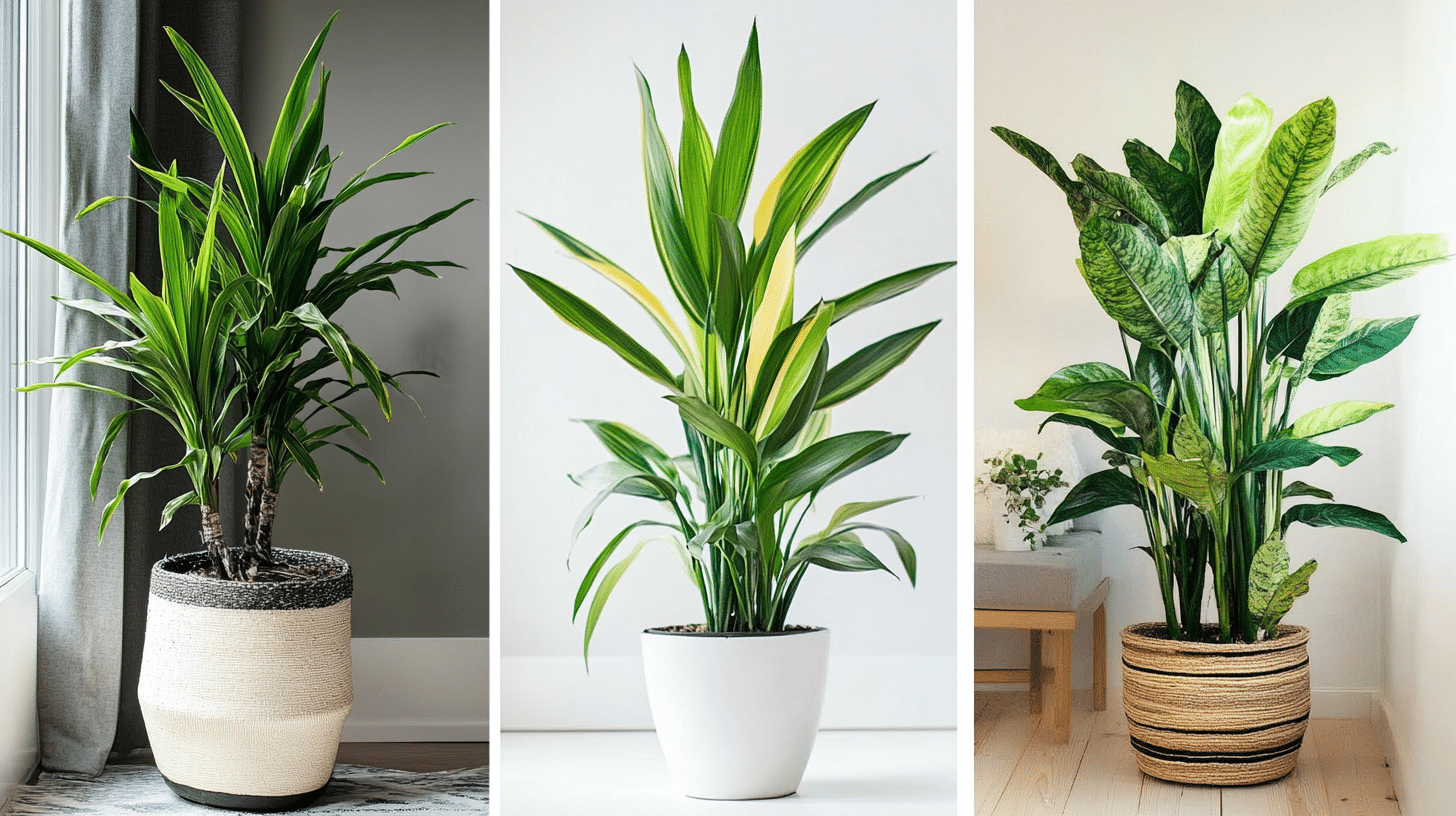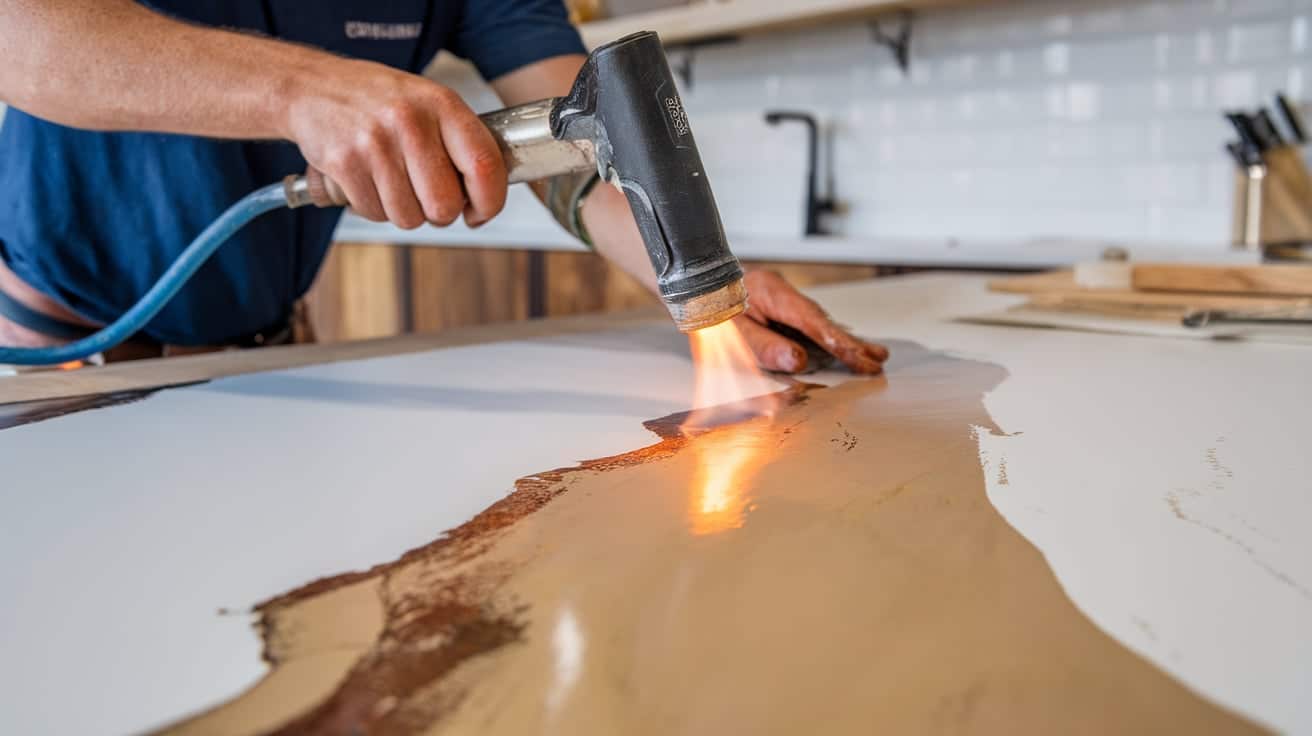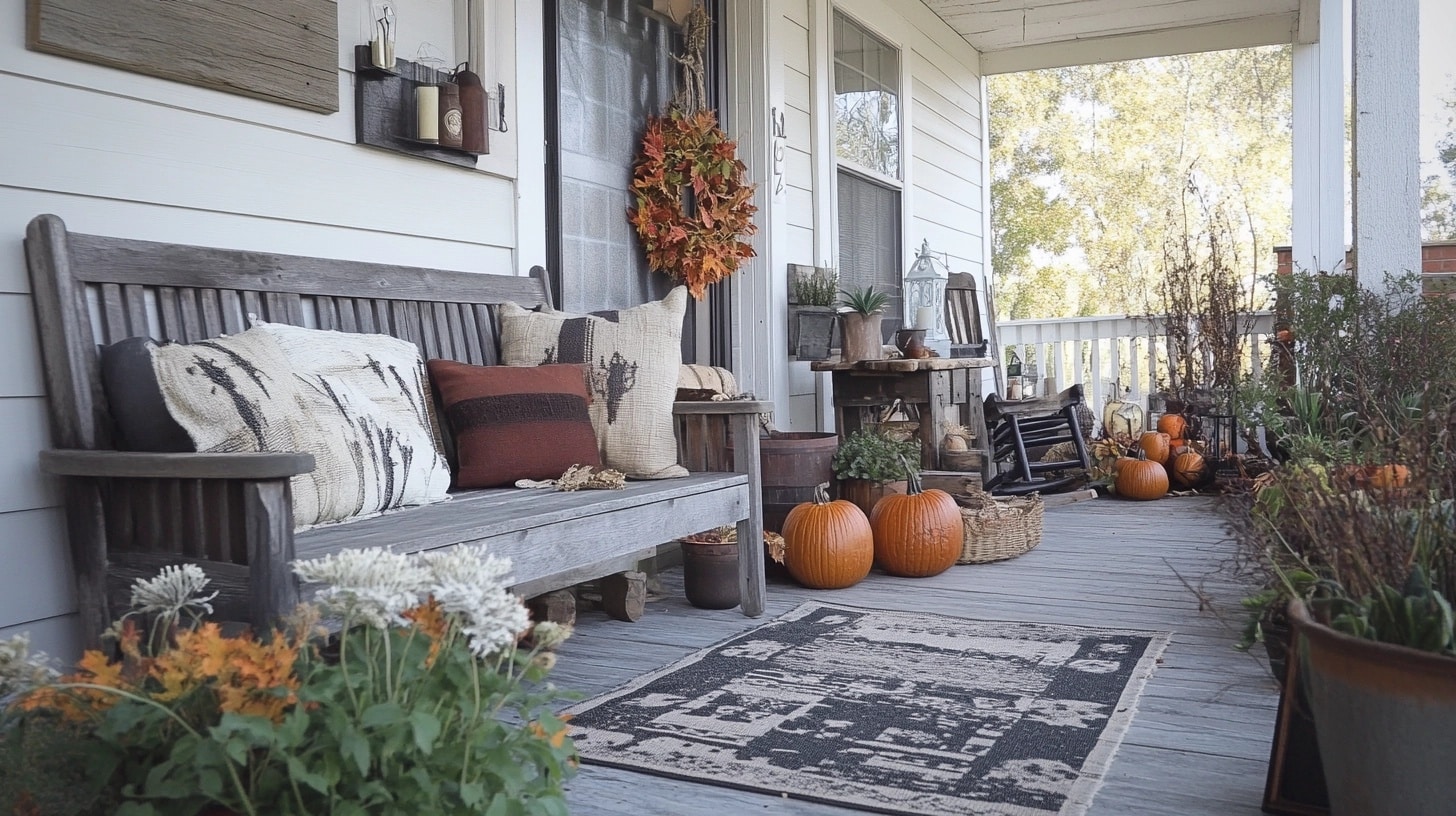19 Tall Low-Light Indoor Plants Perfect for Your Home or Office
If you’re looking to bring some greenery into your home or office but have limited sunlight, don’t worry!
Plenty of tall indoor plants thrive in low-light conditions and can add a refreshing touch to any space. In this guide, we’ll walk you through everything you need to know about selecting and caring for these plants.
Here’s what we’ll cover:
- Understanding low-light conditions and how they affect plant growth
- The benefits of tall indoor plants for air purification and space maximization
- A curated list of the 19 best tall indoor plants for low-light areas
- Essential care tips for keeping your low-light plants healthy
- Styling ideas to integrate these plants into your home or office seamlessly
Let’s jump into how to create a lush, green space with minimal light!
Understanding Low-Light Conditions in Your Home or Office
What Exactly Does “Low Light” Mean?
Low light in indoor spaces refers to areas that receive little sunlight. These spots often receive less than three hours of direct sun daily. North-facing rooms and offices with few windows are common low-light areas. In these places, tall, low-light plants can still grow well.
Why Some Plants Thrive in Low Light
Some tall, low-light plants have special traits that help them grow in dim spaces. These plants often have large, dark leaves that catch more light.
They use energy wisely and grow slower than plants in bright areas. Factors like room temperature and humidity also affect how well these plants grow indoors.
Tall, low-light plants have adapted to thrive in shaded forest floors. They’ve learned to use less light to make food, making them perfect for homes and offices with limited natural light.
You can bring nature into any dim corner of your space by choosing the right tall, low-light plants.
Why Tall Indoor Plants Are Ideal for Low-Light Spaces
Tall indoor plants can make a big impact in low-light areas. These plants offer many benefits, making them great choices for homes and offices. Let’s look at why tall, low-light plants are so useful.
Aesthetic Enhancement
Tall, low-light plants can change how a room looks and feels. They add height and depth to spaces, making rooms seem larger. These plants create a natural focal point, drawing the eye upward.
They can soften harsh corners or fill empty spaces nicely. Tall plants also bring a touch of nature indoors, creating a calm and welcoming feel.
Health Benefits
Many tall, low-light plants help clean the air we breathe. They can remove harmful chemicals from indoor air, which can help reduce headaches and improve focus. Some plants even add moisture to dry indoor air.
This extra humidity can help with dry skin and breathing issues.
Tall, low-light plants do more than just look good. They can make our indoor spaces healthier and more pleasant. You can enjoy both beauty and better air quality in your home or office by choosing the right plants.
19 Best Tall Low Light Plants That Flourish in Indoor Conditions
Tall, low-light plants can transform any dim corner of your home or office. Here’s a list of 19 plants that thrive in low-light settings:
1. ZZ Plant
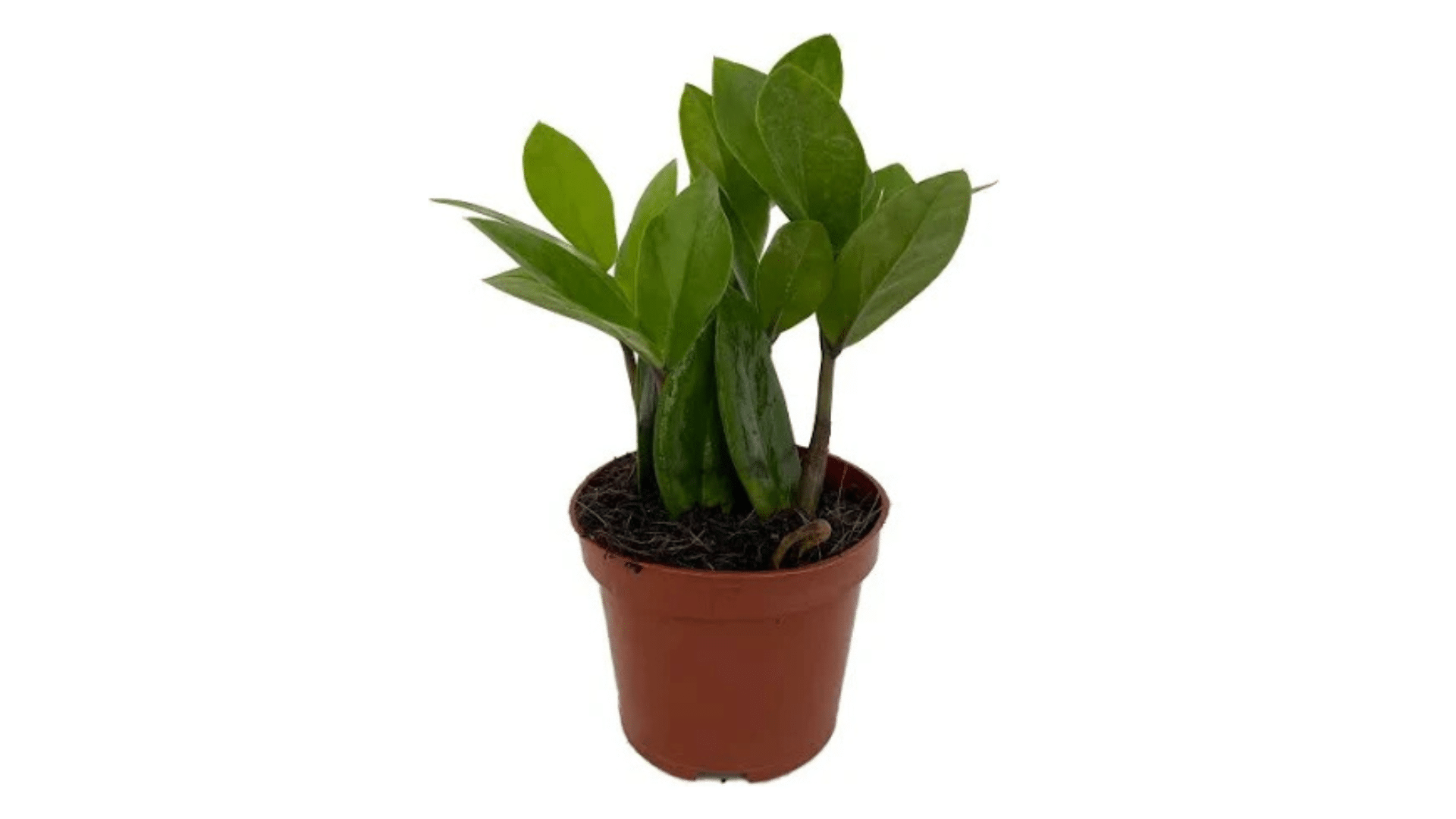
The ZZ Plant is a top choice for beginners and busy plant owners. Its thick, waxy leaves store water, making it very forgiving if you forget to water it. This tall, low-light plant adds a touch of green to any room with minimal fuss.
- Watering: Minimal; drought-tolerant.
- Light Needs: Thrives in indirect or low light.
- Additional Care: Wipe leaves to remove dust.
2. Cat Palm
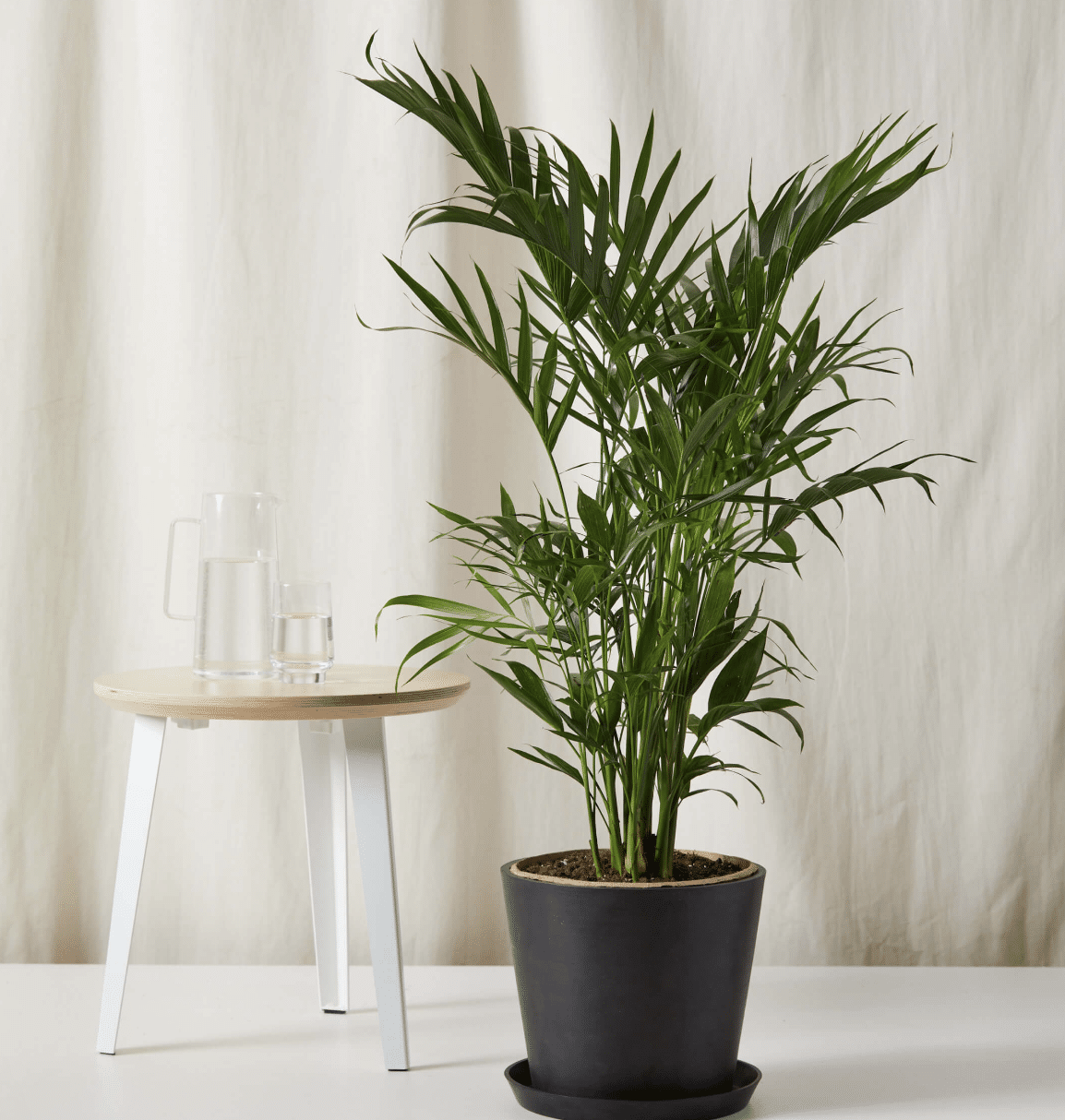
The Cat Palm brings a tropical feel to indoor spaces. Its feathery fronds create a lush, green backdrop in low-light areas. This tall low light plant is perfect for adding a soft, natural touch to your home or office.
- Watering: Keep soil slightly moist but not soggy.
- Light Needs: Low to medium indirect light.
- Additional Care: Prefers higher humidity.
3. 3-Ball Eugenia Topiary
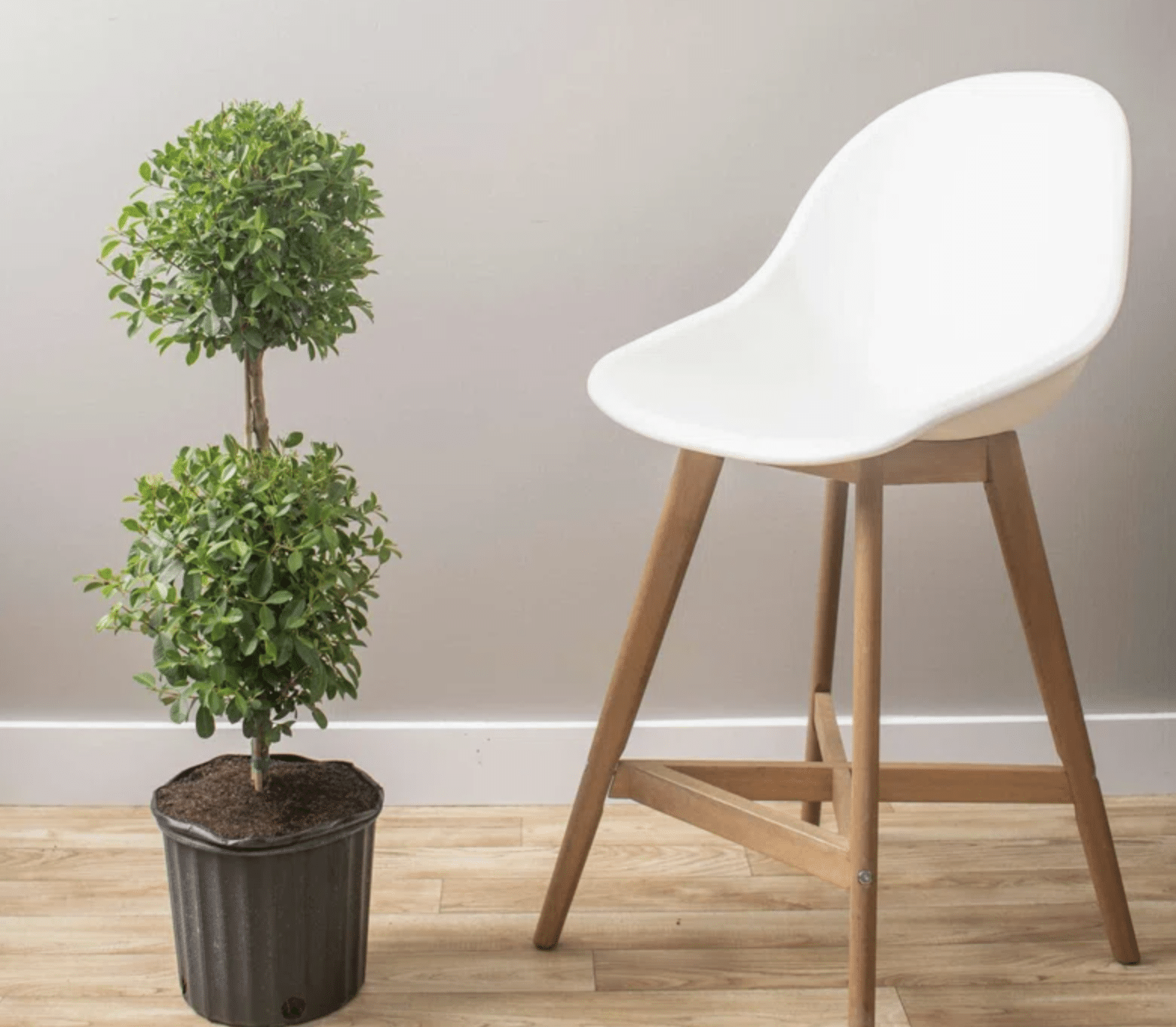
The 3-Ball Eugenia Topiary adds a formal, sculptured look to any space. Its neat, round shape stands out among tall light plants. It’s an excellent choice for those who enjoy gardening indoors.
- Watering: Moderate; keep the soil consistently moist.
- Light Needs: Low indirect light.
- Additional Care: Occasional pruning to maintain shape.
4. Marginata Cane Dragon Tree
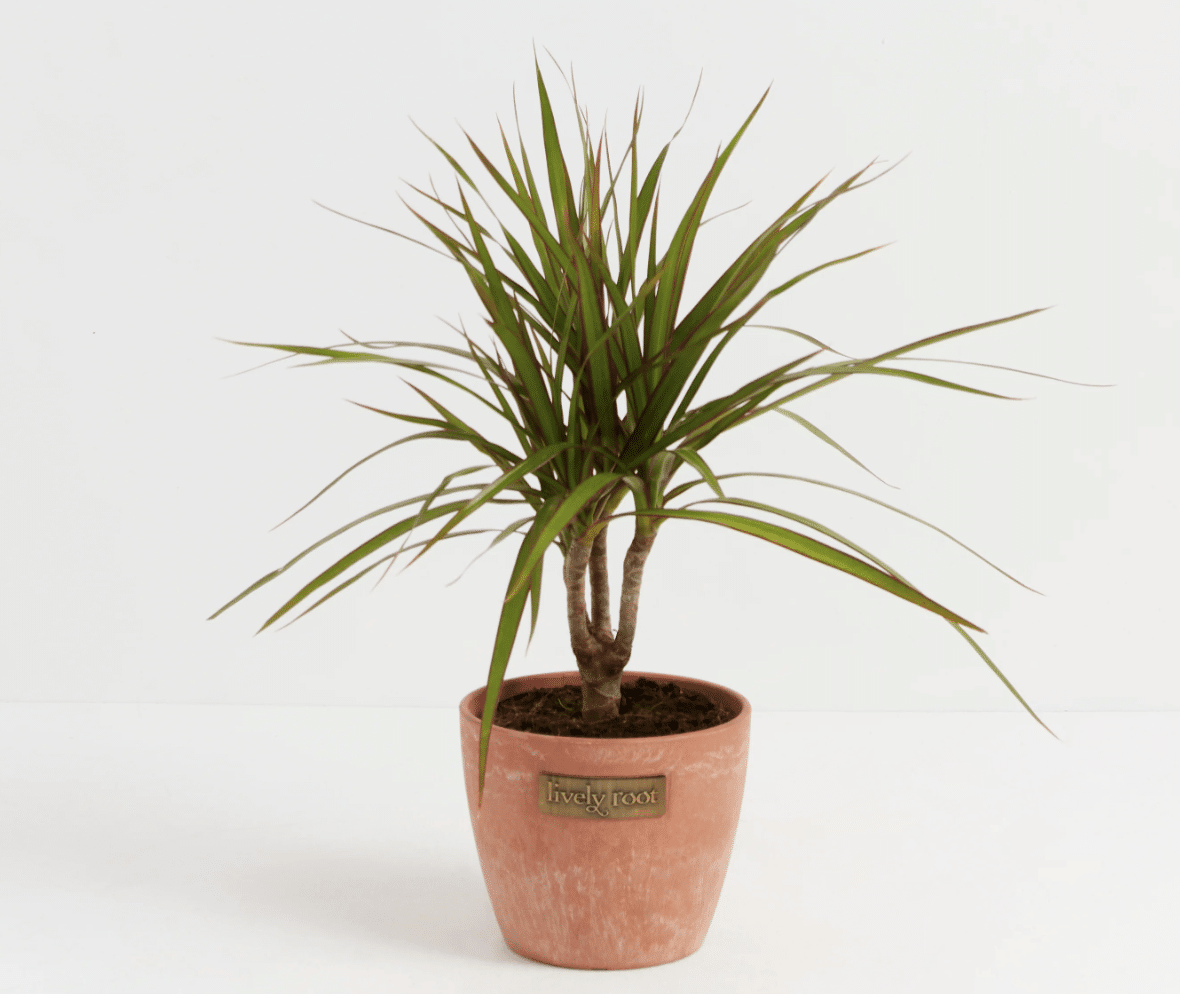
The Marginata Cane Dragon Tree, with its slender trunk and long, narrow leaves, brings a modern architectural feel to interiors. This tall, low-light plant is known for its air-purifying qualities and ease of care.
- Watering: Allow soil to dry between waterings.
- Light Needs: Tolerates low to bright indirect light.
- Additional Care: Trim brown tips to keep it tidy.
5. Star Jasmine Vine Shrub
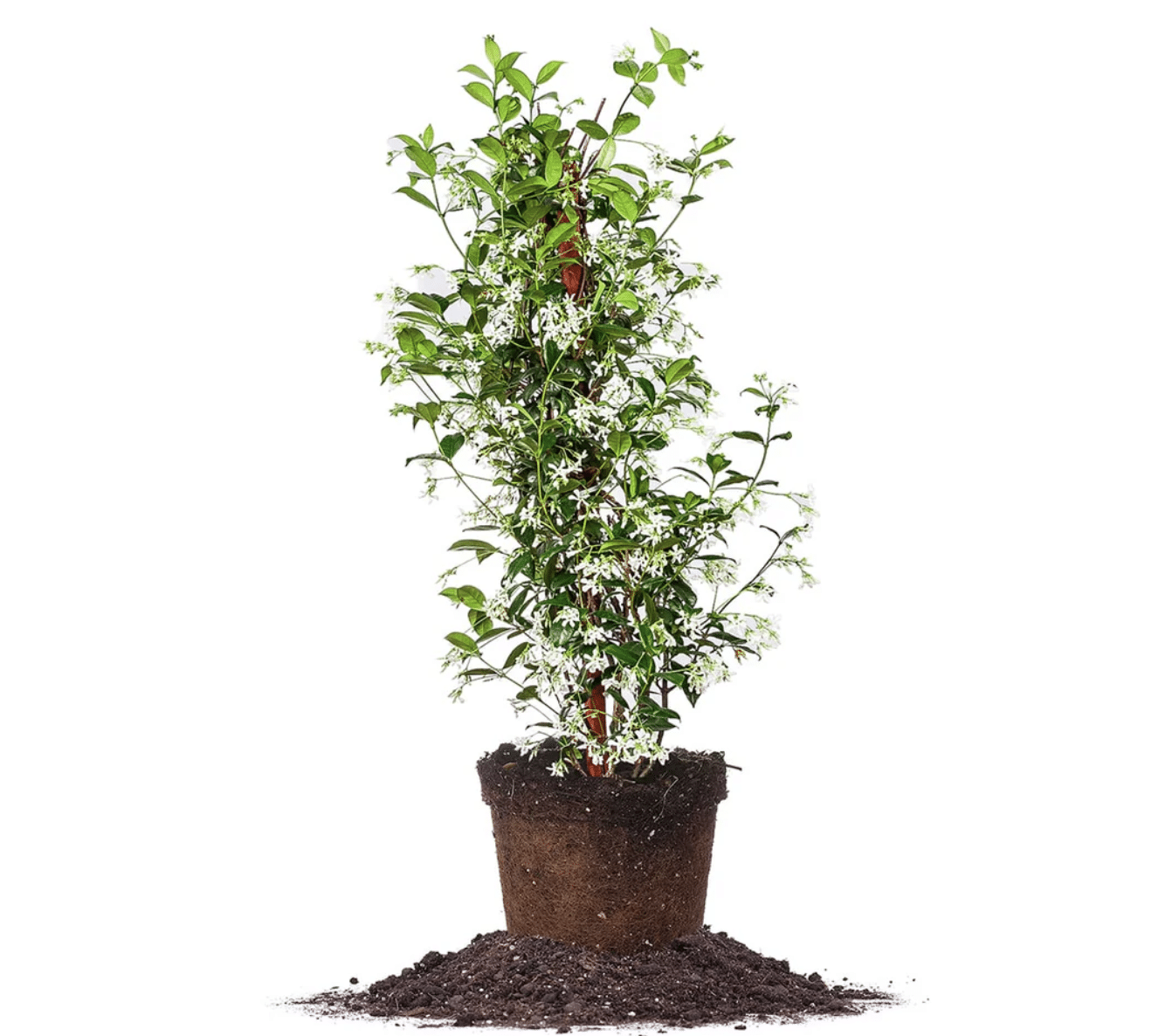
The Star Jasmine Vine Shrub offers versatility in low-light spaces. Its glossy leaves and sweet-scented flowers make it a favorite among tall low light plants. You can shape it to fit your space needs.
- Watering: Water regularly; do not let the soil dry out.
- Light Needs: Prefers medium to low light.
- Additional Care: Can be trained to climb or left to cascade.
6. Hawaiian Ti Plant
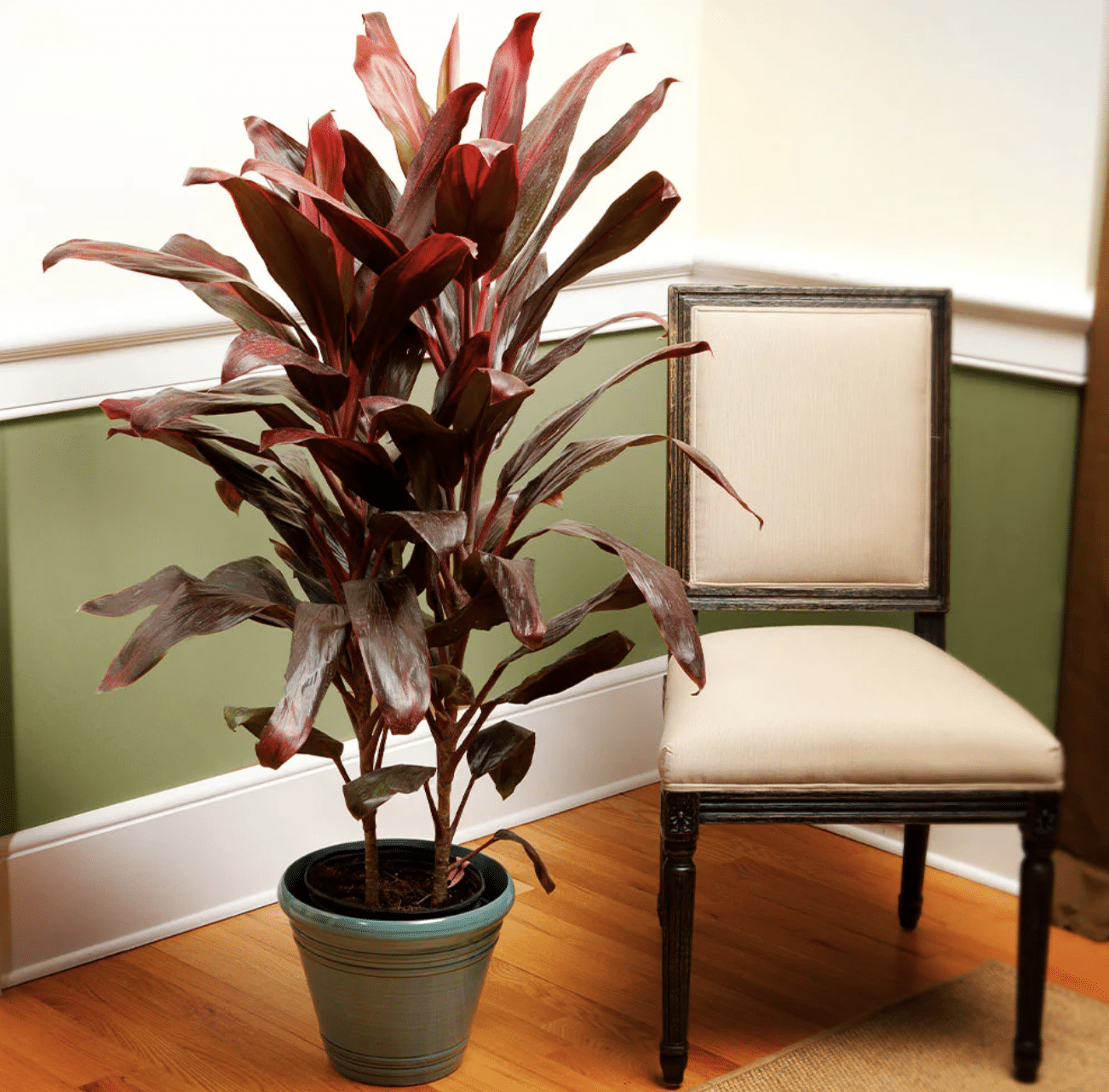
The Hawaiian Ti Plant, also known as Cordyline, adds a splash of color to low-light areas. Its long, sword-like leaves come in shades of green, red, and pink. This tall, low-light plant brings a tropical vibe to any indoor space.
- Watering: Keep soil moist but well-draining.
- Light Needs: Indirect or low light.
- Additional Care: Mist regularly for added humidity.
7. Large Majesty Palm
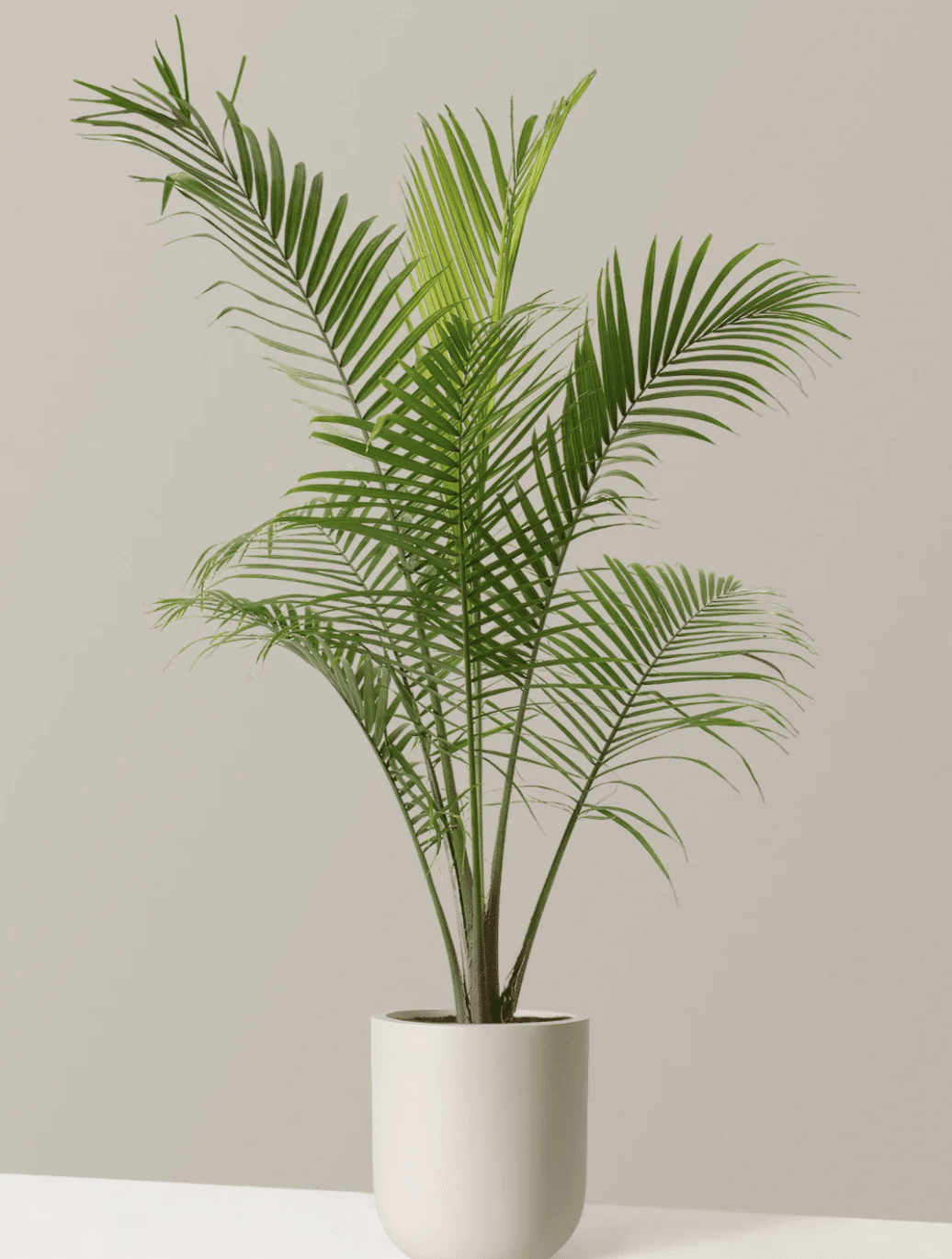
The Majesty Palm is a classic choice for creating a lush, tropical atmosphere. Its feathery fronds arch gracefully, making it an elegant addition to any room. This tall, low-light plant can grow quite large, becoming a stunning focal point.
- Watering: Regular watering; keep soil evenly moist.
- Light Needs: Prefers medium light but tolerates low light.
- Additional Care: Needs high humidity; mist leaves often.
8. Alocasia Dawn
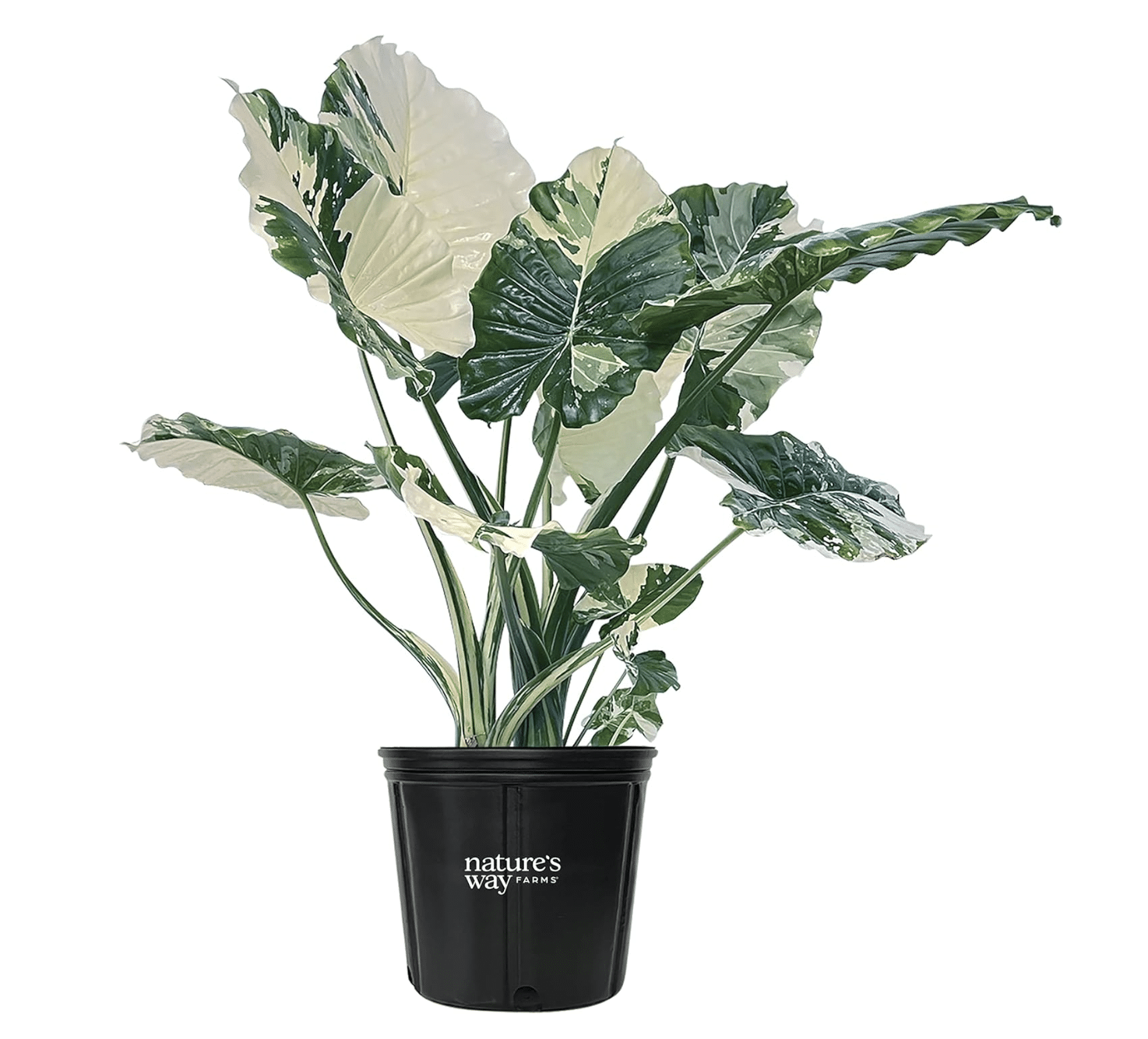
Alocasia Dawn, with its large, heart-shaped leaves, brings a bold, exotic look to indoor spaces. This tall low light plant is perfect for adding drama and texture to dim corners of your home or office.
- Watering: Keep soil moist but not waterlogged.
- Light Needs: Low indirect light.
- Additional Care: Loves humidity, so mist leaves regularly.
9. Emerald Isle Alocasia
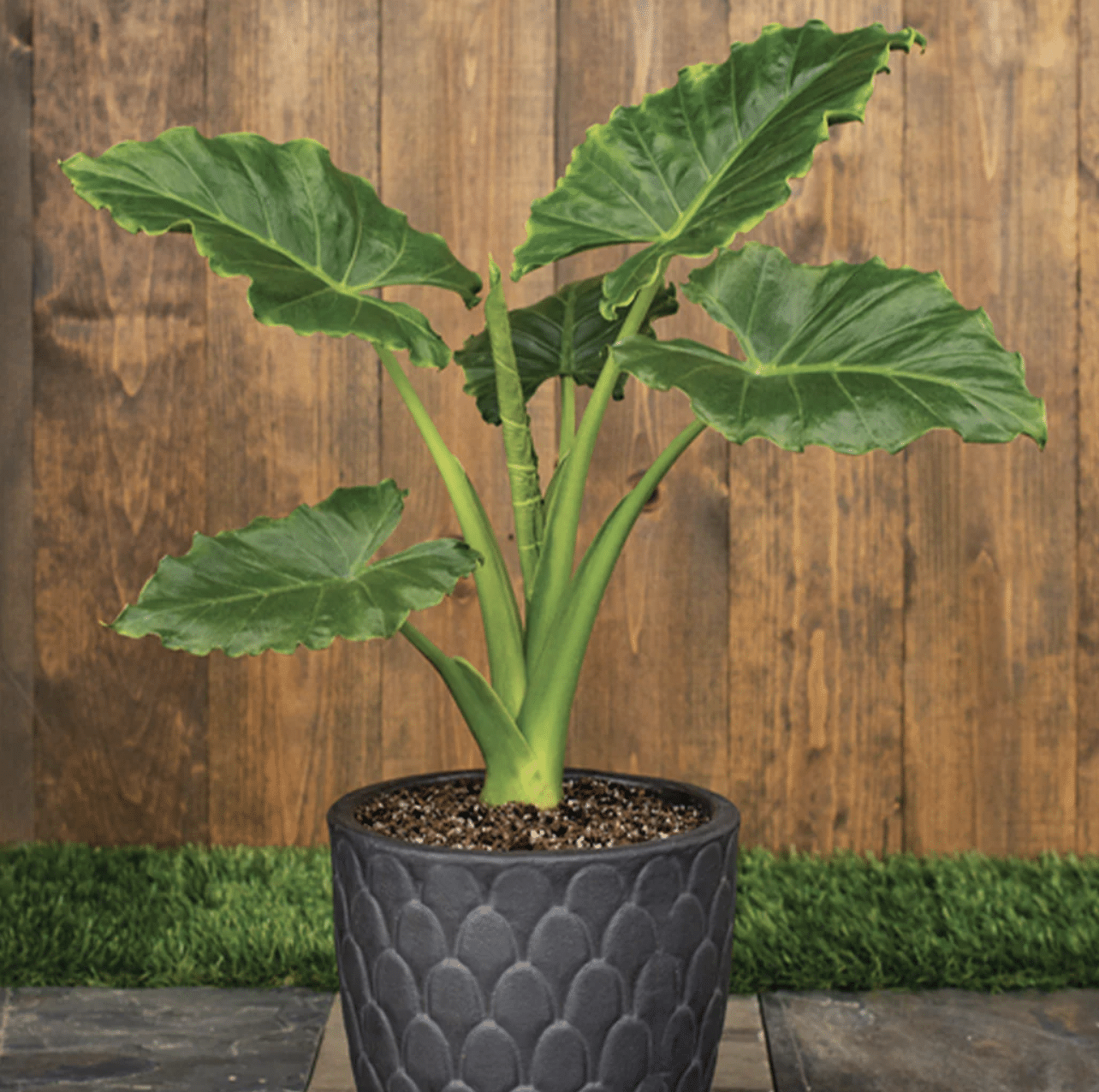
The Emerald Isle Alocasia features striking, arrow-shaped leaves with prominent veins. Its unique foliage makes it stand out among tall, low-light plants. It’s an excellent choice for those who want to make a statement with their indoor greenery.
- Watering: Water when the top inch of soil dries out.
- Light Needs: Tolerates low light but prefers indirect light.
- Additional Care: Clean leaves to promote healthy growth.
10. Snake Plant (Dracaena spp.)
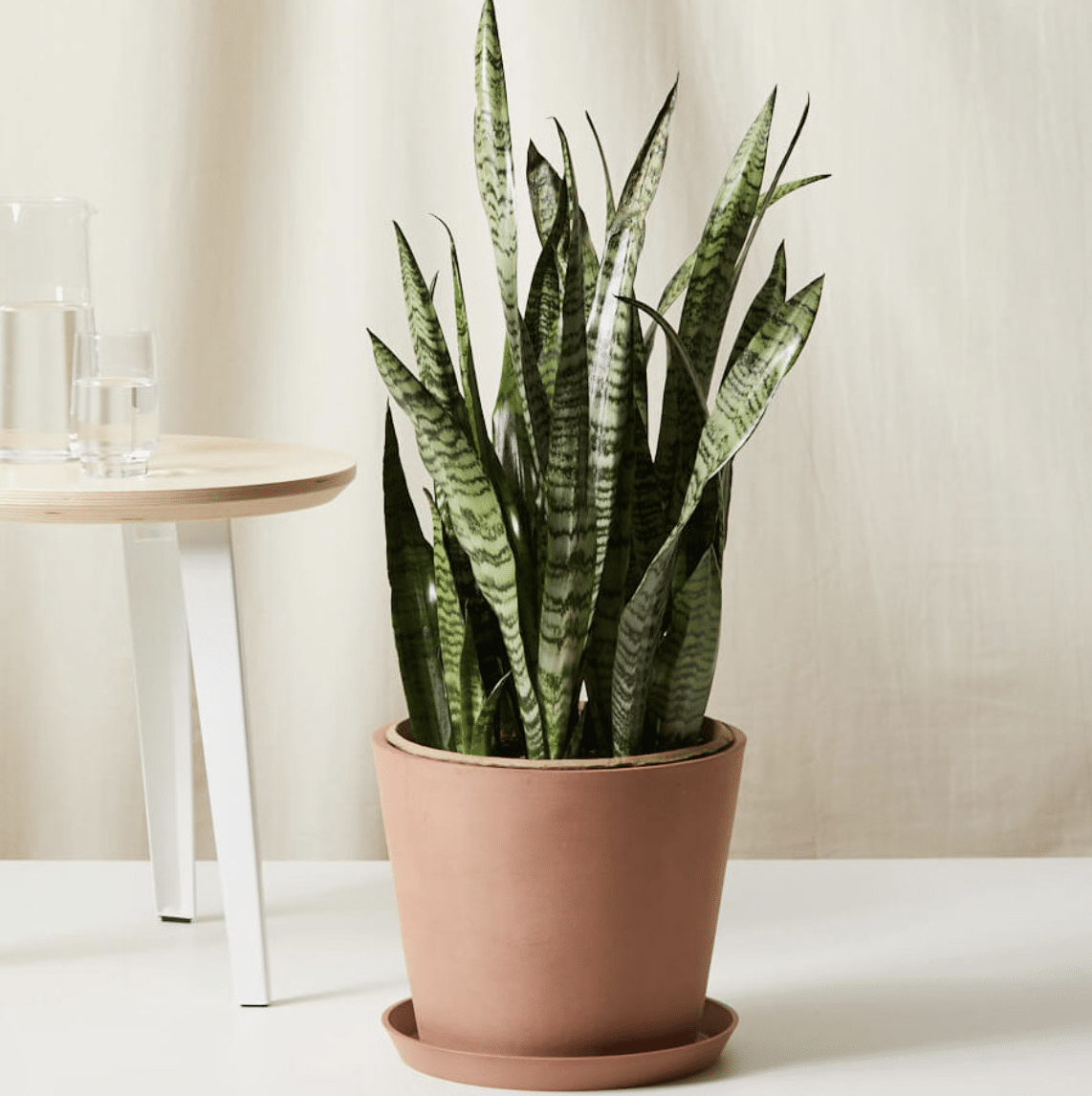
The Snake Plant is renowned for its hardiness and air-purifying abilities. Its tall, upright leaves come in various patterns and colors. This tall, low-light plant is perfect for beginners or those who often forget to water their plants.
- Watering: Let the soil dry completely between waterings.
- Light Needs: Tolerates low light well.
- Additional Care: Very low-maintenance and durable.
11. Ponytail Palm
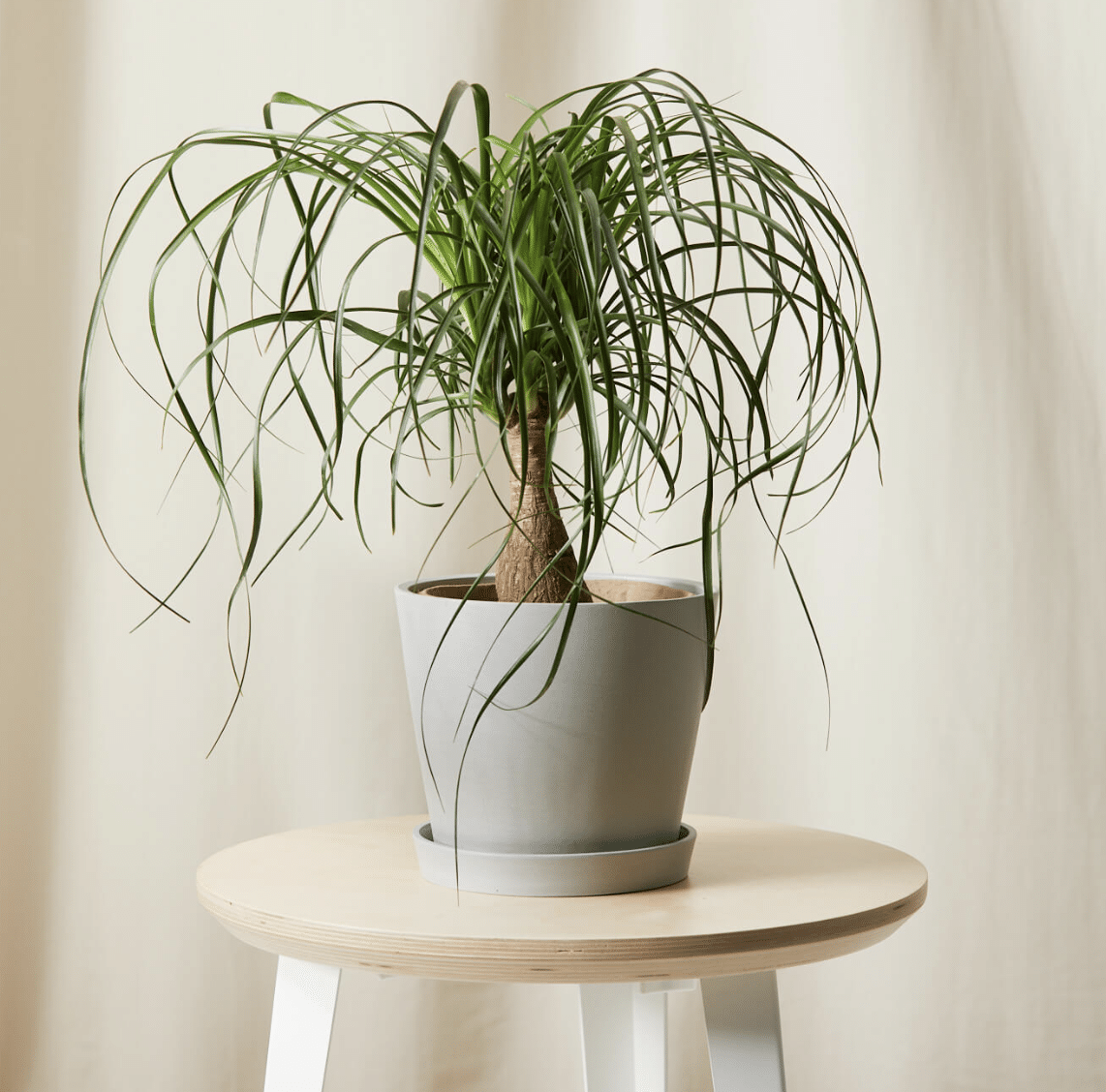
Despite its name, the Ponytail Palm is neither a palm nor a tree. Its bulbous trunk and long, curly leaves give it a unique, whimsical appearance. This tall low light plant is drought-tolerant and perfect for those who prefer low-maintenance greenery.
- Watering: Water sparingly; drought-tolerant.
- Light Needs: Prefers bright, indirect light but can adapt to low light.
- Additional Care: Does well in dry indoor air.
12. Peace Lily
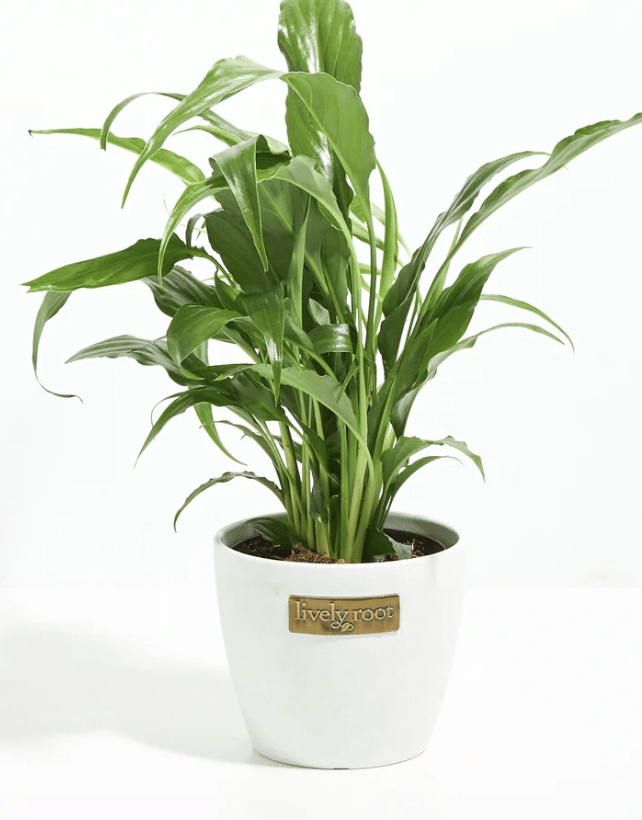
The Peace Lily is known for its elegant white flowers and glossy green leaves. It’s one of the best air-purifying tall low-light plants, making it ideal for bedrooms or offices. Its ability to thrive in low-light conditions makes it a popular choice for indoor spaces.
- Watering: Keep soil consistently moist.
- Light Needs: Thrives in low light.
- Additional Care: Clean leaves to prevent dust buildup.
13. Dracaena Massangeana Plant
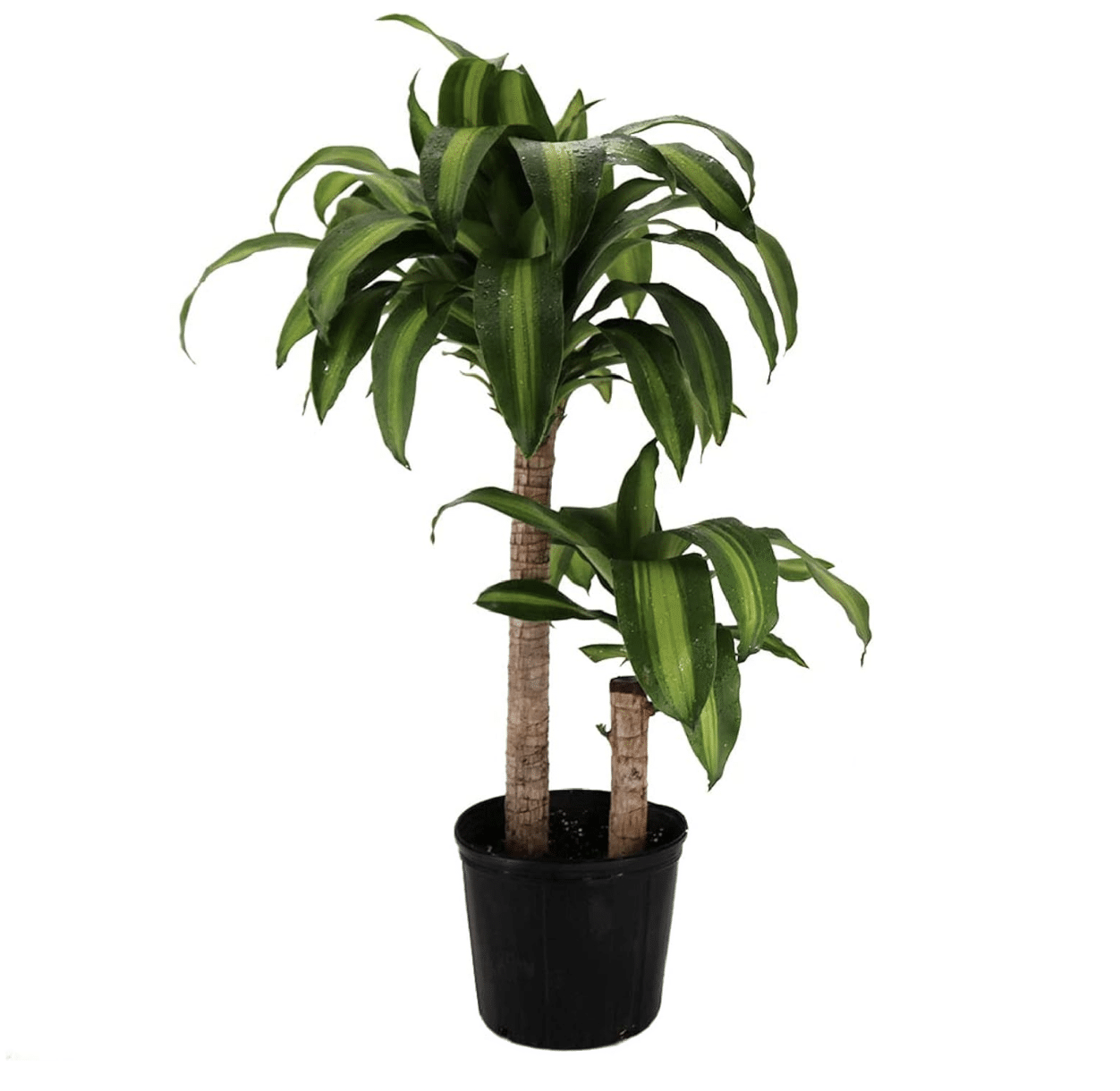
Often called the “corn plant,” the Dracaena Massangeana features long, striped leaves that arch outward from a thick stem. This tall low light plant is known for its air-purifying qualities and ability to adapt to various indoor conditions.
- Watering: Water when the topsoil feels dry.
- Light Needs: Tolerates low to medium light.
- Additional Care: Prune dead leaves to maintain shape.
14. Meyer Lemon Tree
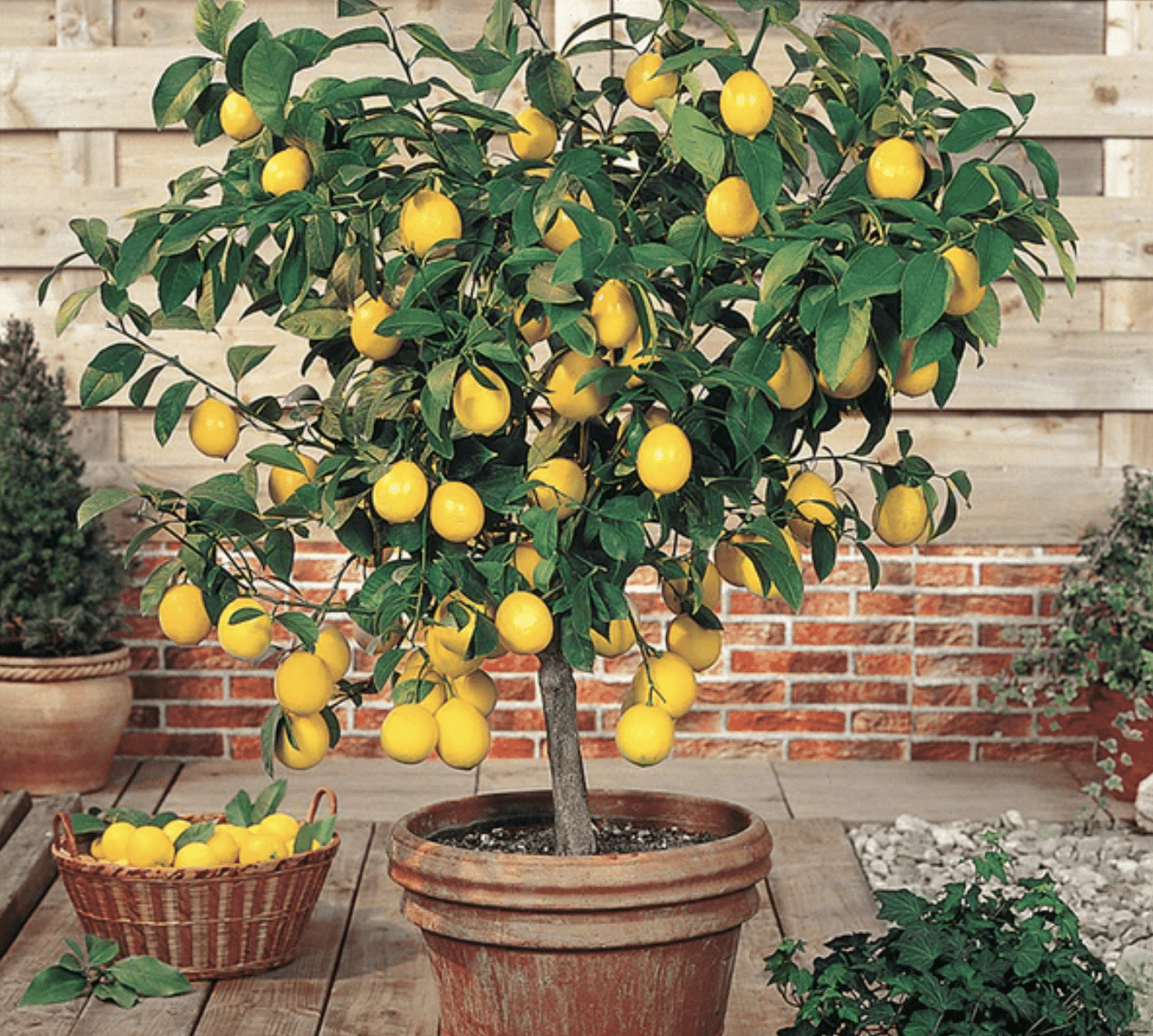
The Meyer Lemon Tree brings a touch of the outdoors inside. While it prefers brighter light, it can adapt to lower light conditions. This tall low light plant looks great and can produce fragrant blossoms and fruit.
- Watering: Keep soil slightly moist.
- Light Needs: Low to medium indirect light.
- Additional Care: Fertilize monthly during the growing season.
15. Weeping Fig Tree
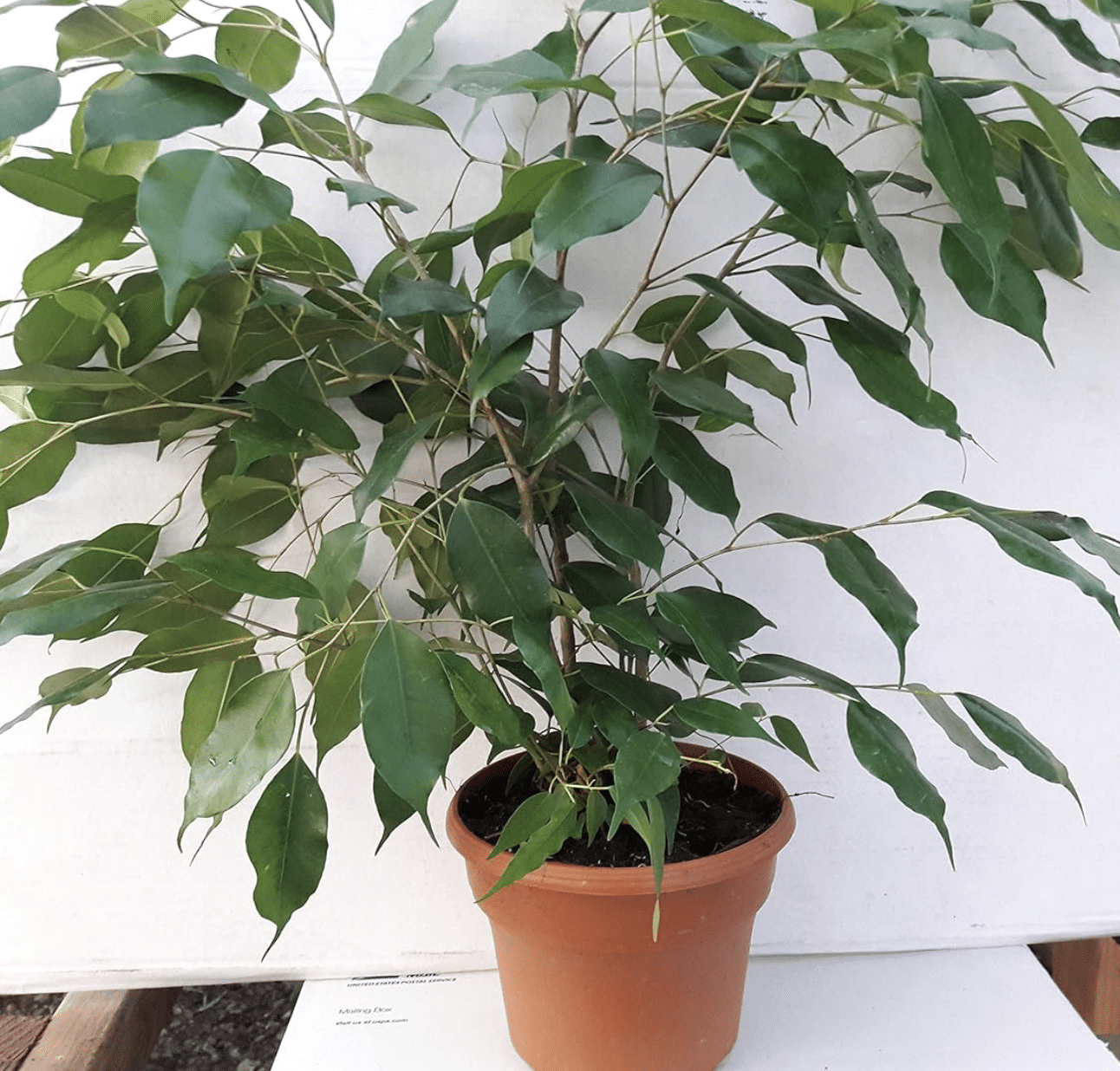
The Weeping Fig Tree, or Ficus Benjamina, is known for its graceful, drooping branches and dense foliage. This tall, low-light plant can grow quite large, making it an excellent choice for filling empty corners or creating natural dividers in open spaces.
- Watering: Water when the soil dries slightly.
- Light Needs: Prefers indirect, low light.
- Additional Care: Avoid moving it often, as it dislikes environmental changes.
16. Braided Benjamina Ficus Tree
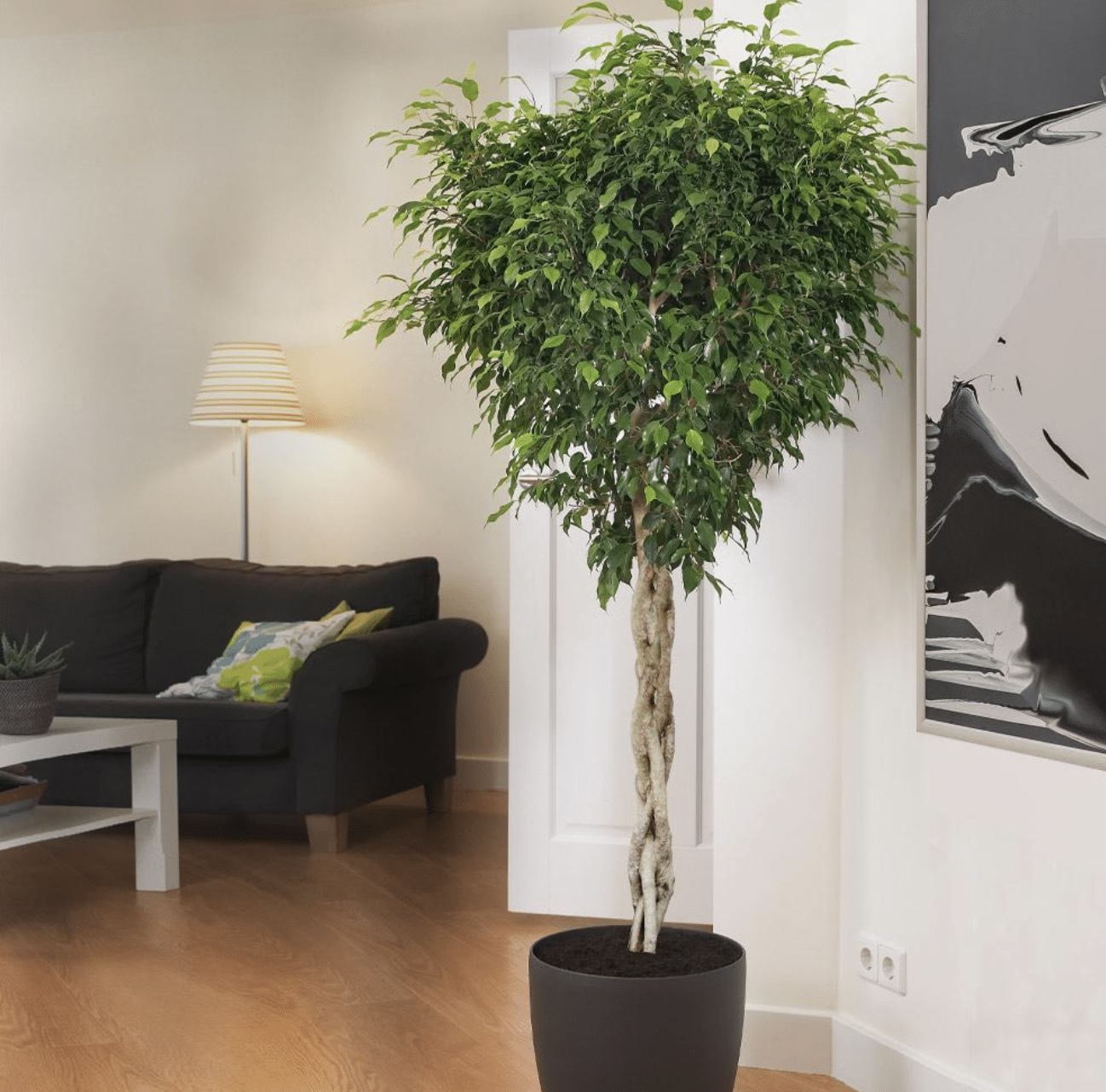
The Braided Benjamina Ficus Tree is a unique variation of the Weeping Fig. Its braided trunk adds an interesting visual element to any room. This tall, low-light plant is perfect for those who want a tree-like plant with artistry.
- Watering: Water thoroughly when the topsoil is dry.
- Light Needs: Low indirect light.
- Additional Care: Prune regularly to maintain its braided shape.
17. Norfolk Island Pine Plant
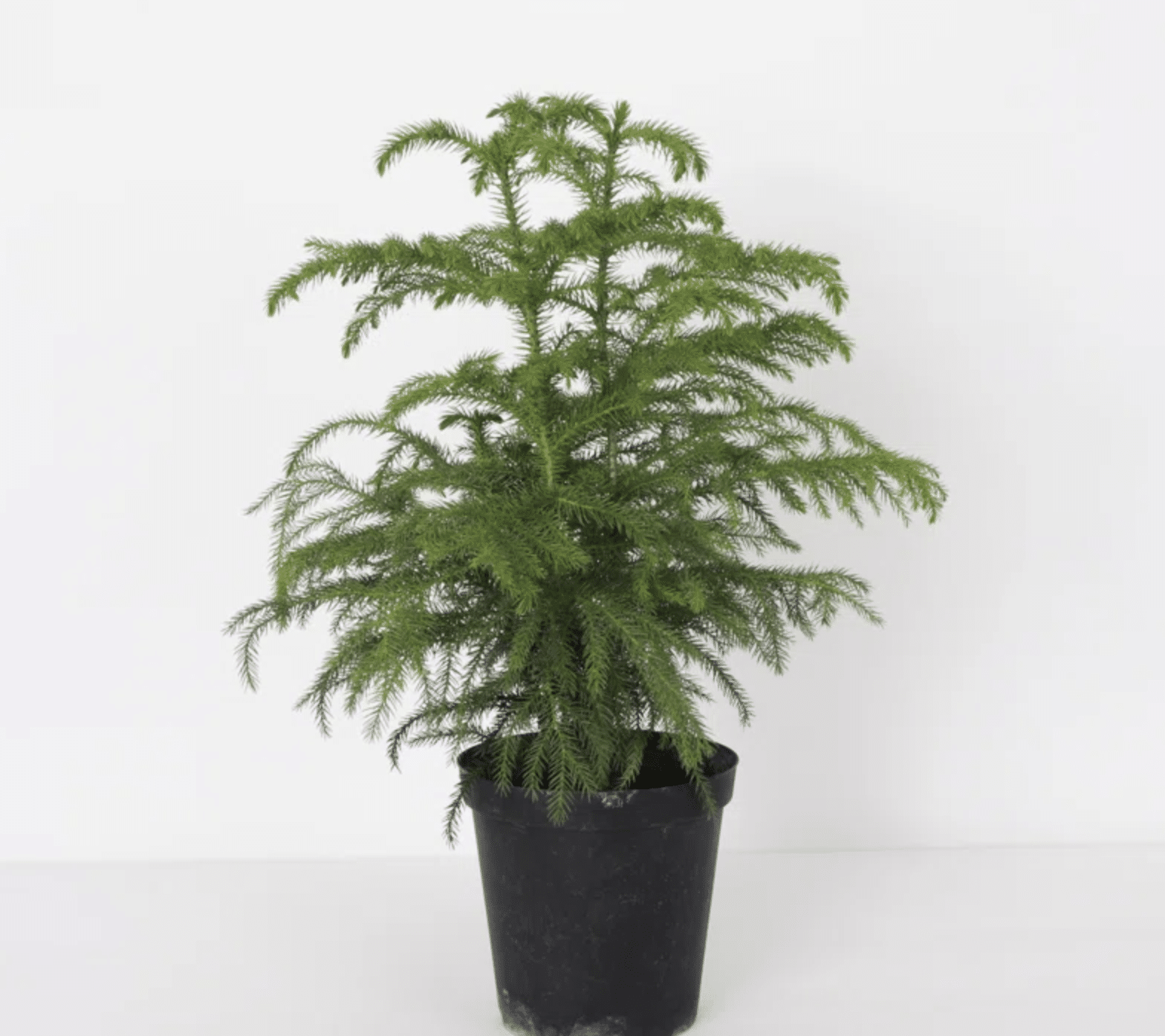
Despite its name, the Norfolk Island Pine isn’t a pine tree. It’s a tropical plant that resembles a mini Christmas tree. This tall low light plant adds a festive touch to any room year-round and can adapt well to indoor conditions.
- Watering: Keep soil evenly moist.
- Light Needs: Low light, but can adapt to medium light.
- Additional Care: Does best with high humidity.
18. Burgundy Rubber Tree
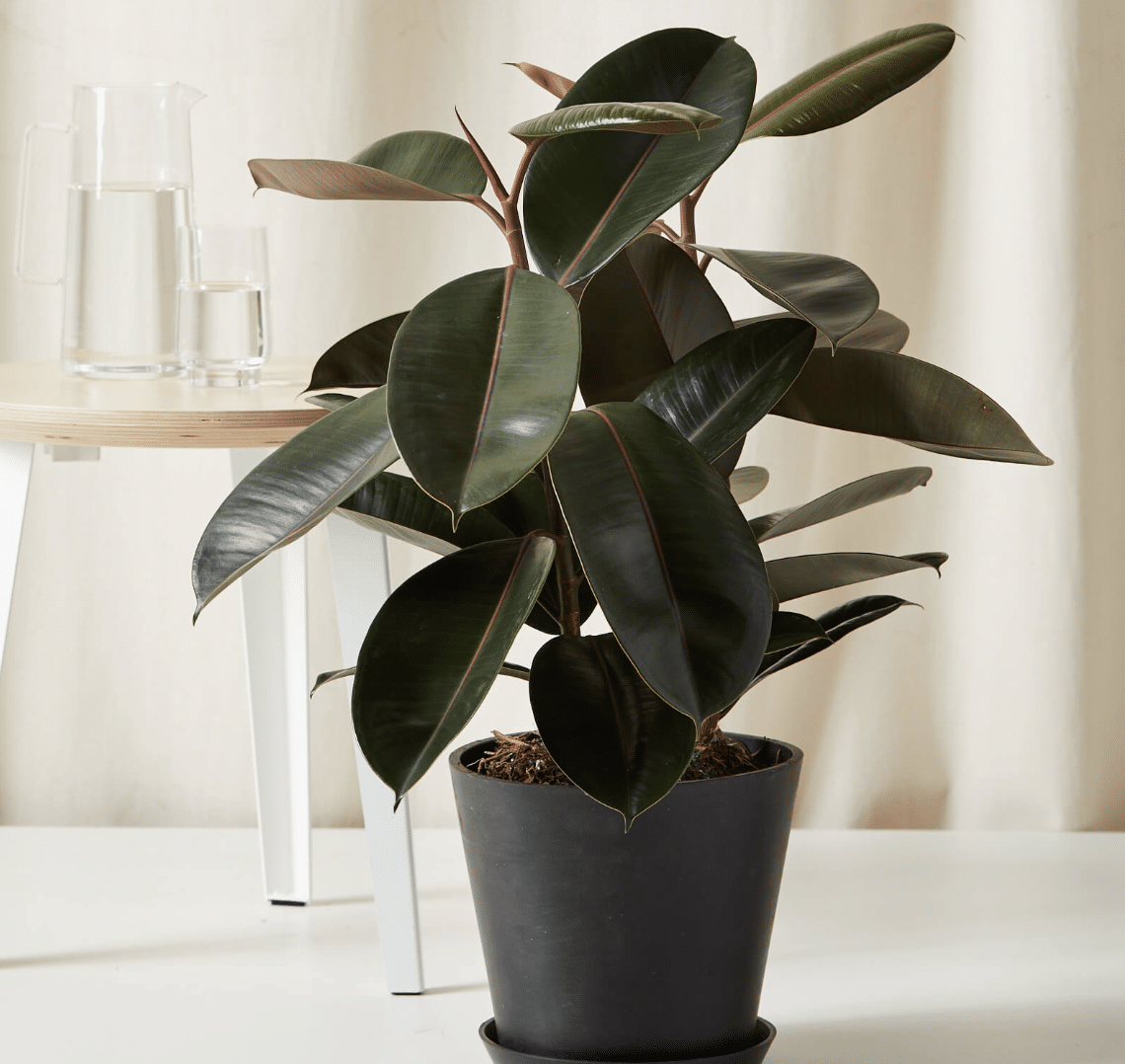
The Burgundy Rubber Tree is known for its large, glossy leaves, ranging from dark green to deep burgundy. This tall, low-light plant makes a bold statement in any room and is excellent at purifying indoor air.
- Watering: Water when the top inch of soil is dry.
- Light Needs: Adapts to low light but prefers indirect light.
- Additional Care: Wipe leaves regularly to remove dust.
19. Cordyline Harlequin
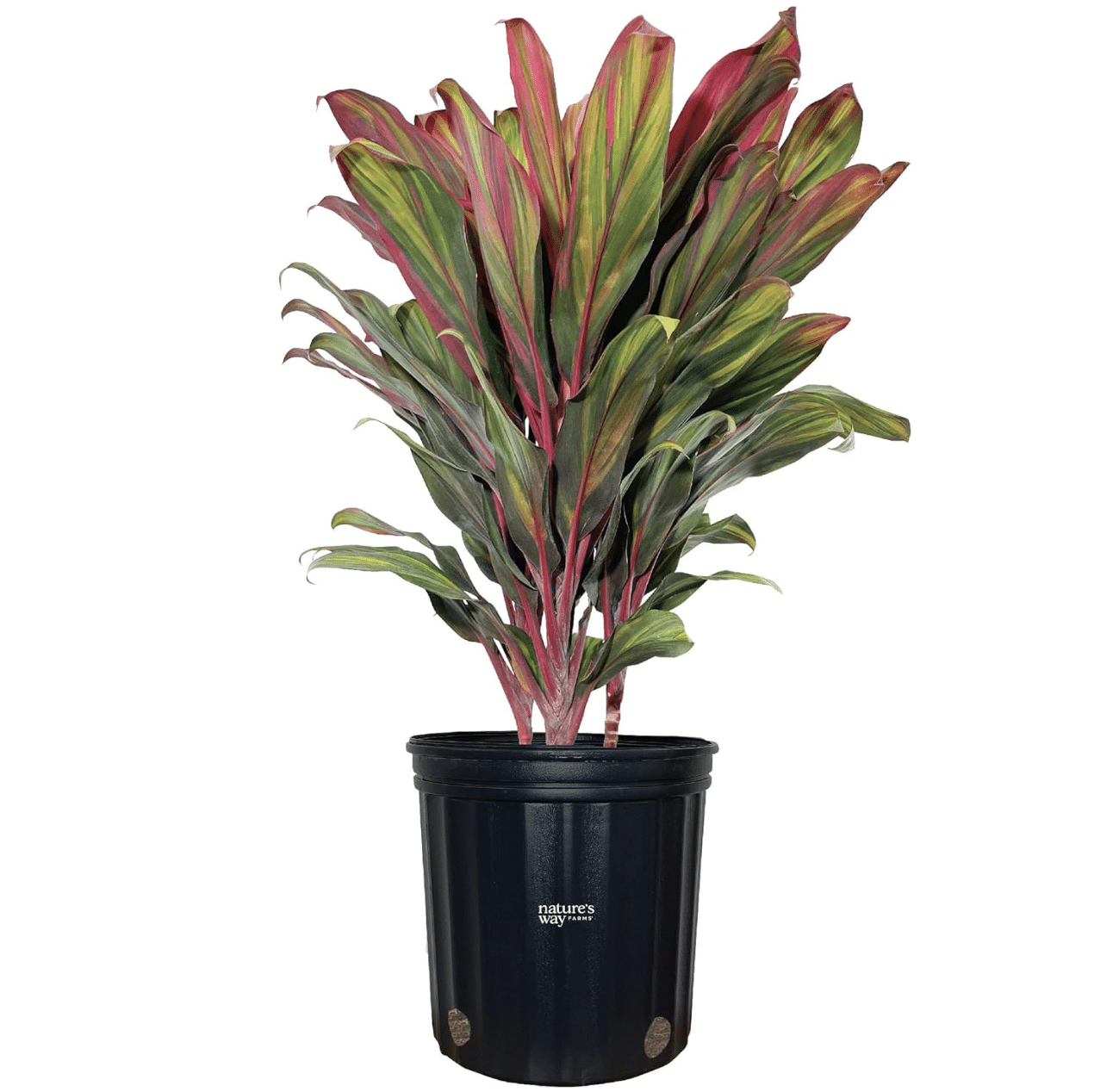
The Cordyline Harlequin is a colorful variety of the Ti Plant family. Its striking leaves feature shades of pink, cream, and green, adding a vibrant pop of color to low-light areas. This tall, low-light plant is perfect for brightening up a dim corner.
- Watering: Keep the soil lightly moist but not soggy.
- Light Needs: Thrives in low to medium light.
- Additional Care: Mist leaves occasionally for humidity.
These tall light plants offer a wide range of options for any indoor space. Whether you’re looking for easy care, air-purifying qualities, or striking looks, a plant on this list will suit your needs and enhance your home or office environment.
How to Select the Best Plants for Low-Light Settings
When choosing tall light plants, think about a few important things:
Growth habits: Some plants grow straight up, while others spread out. Pick a plan that fits your space well. Tall, light plants that grow upward are great for small corners. Plants that spread can fill larger areas nicely.
Watering needs: Different plants need different amounts of water. Some tall, low-light plants like to dry out between waterings, while others need to stay moist. Choose a plant that matches how often you can water it.
Maintenance levels: Some plants need more care than others. If you’re busy, look for low-maintenance, tall, light plants. These plants can thrive with less attention.
Practical Indoor Plant Care Tips for Low-Light Plants
Caring for tall, low-light plants doesn’t have to be tricky. With a few simple tips, you can keep your indoor greenery thriving. Let’s look at some key care practices and common mistakes to avoid.
Proper Watering Schedules for Low-Light Plants
Water needs vary among tall light plants. Most prefer to dry out a bit between waterings. Here’s a simple method:
- Stick your finger about an inch into the soil.
- If it feels dry, it’s time to water.
- Water deeply until it runs out the bottom of the pot.
- Empty the saucer to prevent root rot.
For most tall light plants, this method works well once a week. Adjust based on your plant’s specific needs.
How to Boost Humidity for Plants that Need Extra Moisture
Many tall, low-light plants come from humid areas. To mimic this:
- Mist your plants’ leaves regularly with water.
- Place a tray of pebbles and water near your plants.
- Group plants together to create a mini-humid zone.
- Use a small humidifier in rooms with dry air.
These methods help your tall, low-light plants feel more at home.
Common Mistakes to Avoid
Overwatering: Signs and How to Avoid it
Overwatering is a common issue with tall light plants. Signs include:
- Yellow or brown leaves
- Soft, mushy stems
- Mold on the soil surface
- Fruit flies around the plant
To avoid overwatering:
- Always check the soil before watering.
- Use pots with drainage holes.
- Don’t let plants sit in water.
- Water less often in winter when growth slows.
Incorrect Light Placement and Its Effects on Plant Growth
Even tall low light plants need some light. Poor placement can cause:
- Leggy growth (long, weak stems)
- Pale or yellow leaves
- Slow or no growth
- Leaf drop
To avoid light issues:
- Place plants near north or east-facing windows.
- Use sheer curtains to filter bright light.
- Rotate plants regularly for even growth.
- Consider using grow lights in very dark areas.
Following these tips and avoiding common mistakes can help your tall, low-light plants thrive. Remember, each plant is unique. Pay attention to your plants’ signals and adjust care as needed. You’ll become an expert at caring for your indoor green friends with a little practice.
Styling Tips: How to Incorporate Tall Low-Light Plants in Your Space
Tall, low-light plants can transform your indoor space. They add life, texture, and a touch of nature to any room. Let’s explore how to display these plants for the best effect and keep them looking fresh.
Ideal Spots to Place Your Tall Plants for Maximum Impact
- Empty corners: Tall, low-light plants can fill bare corners, adding depth to your room.
- Behind furniture: Plants can be placed behind sofas or chairs to create a lush backdrop.
- Entryways: Welcome guests with a striking tall plant near your front door.
- Room dividers: Use large plants to create natural partitions in open spaces.
- Staircase landings: Add interest to oft-neglected areas with a tall plant.
- Bathroom spaces: Many tall light plants thrive in humid bathroom environments.
Matching Decorative Pots with Your Room Decor
- Consider color: Choose pots that complement or contrast your room’s color scheme.
- Think about style: Modern rooms pair well with sleek, simple pots. Bohemian spaces can handle more ornate options.
- Size matters: Ensure the pot is proportional to your plant and the room.
- Texture: Use rough or smooth textures to add visual interest.
- Material: From ceramic to woven baskets, pot materials can enhance your decor.
- Elevation: Plant stands can add height and draw attention to your tall, low-light plants.
Maintenance Tips to Keep Your Plants Looking Fresh
How to prune, clean, and maintain your plants’ appearance:
Pruning
- Remove dead or yellowing leaves regularly.
- Trim brown leaf tips with clean, sharp scissors.
- For bushy plants, pinch off new growth to encourage fullness.
- Always use clean tools to avoid spreading disease.
Cleaning
- Dust leaves gently with a soft, damp cloth.
- For furry leaves, use a soft brush instead of a cloth.
- Avoid using leaf shine products, which can clog plant pores.
- Clean both the top and bottom of leaves to prevent pest issues.
Maintaining Appearance
- Rotate your plants weekly for even growth.
- Support tall stems with stakes if needed.
- Remove any fallen leaves from the soil surface.
- Wipe down pots to keep them clean and free of mineral buildup.
- Refresh the top layer of soil occasionally to keep it looking neat.
- Group plants with similar needs for a lush, varied display.
Conclusion
Tall, low-light plants offer a world of green possibilities for indoor spaces. From the easy-care ZZ Plant to the striking Cordyline Harlequin, there’s a plant to suit every taste and skill level.
These plants add beauty to your home or office, help clean the air, and create a calming atmosphere. By understanding their needs and following simple care tips, you can enjoy lush, thriving plants even in dim corners.
Remember, each plant is unique, so pay attention to its signals and adjust care as needed. With the right choice and proper care, your indoor space can become a green oasis, bringing a touch of nature’s wonder into your daily life.
Embrace the joy of growing tall light plants and watch as they transform your living or working environment.

